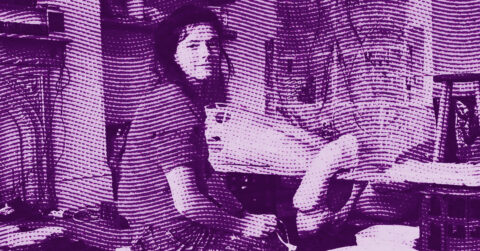Listen to me carefully, you bunch of snobs: Dave McGary was not an ordinary sculptor. For over three decades, this man born in the plains of Wyoming achieved the feat of giving a second life to bronze, a material by essence inert, to make it the vehicle of a living memory. His sculptures of Native Americans do not just adorn the prestigious collections of the Smithsonian, the United States Capitol, or Concordia University: they challenge, question, and upset our relationship with history and artistic authenticity.
McGary had understood a fundamental truth that many artists ignore: technique is nothing without soul. Trained from the age of sixteen in ancestral casting techniques in Italy with ninth-generation craftsmen, he perfectly mastered his art. But what radically distinguishes his work from that of his contemporaries is his unique ability to breathe life into inorganic matter. His polychrome bronzes challenge our very perception of sculpture: these eagle feathers that seem to quiver, these leather fringes that appear to dance, these beads meticulously painted one by one create such a perfect illusion that it becomes disturbing.
McGary’s technical innovation lies in this revolutionary synthesis between traditional patina and acrylic paint. Where other sculptors stop at the classic brown of patinated bronze, he boldly recreates the chromatic richness of Lakota ceremonies he had the privilege to observe. “Color is my signature,” he declared [1]. This visual signature, the result of years of research and experimentation, requires up to 160 separate castings for a single work, each element then assembled with goldsmith’s precision.
Sculpted anthropology
But McGary was not just a virtuoso of technique. His methodological approach reveals a remarkable anthropological dimension that places his work in a unique intellectual perspective. Each sculpture is born from an exhaustive research process that can last three to four years. The artist does not just consult archives: he travels to reservations, talks with elders, participates in sacred ceremonies. This total immersion in Sioux culture, confirmed by his adoption into the Bear clan and his Lakota name “Wambalee Tanka” (Great Eagle), gives his works a rare ethnographic authenticity.
This approach strangely recalls that of the great anthropologists of the 20th century. Just as Bronisław Malinowski revolutionized ethnography by advocating participant observation in the Trobriand Islands, McGary developed his own method of cultural immersion to grasp the essence of his subjects [2]. Gerald Red Elk, the tribal historian who adopted him, recognized this exceptional listening quality in him, nicknaming him “Big Red Ears” for his ability to absorb ancestral stories. This anthropological approach is reflected in every detail of his sculptures: the position of an honor feather, the meaning of a motif painted on a shield, the authenticity of a horse ornament, all testify to an intimate knowledge of Sioux cultural codes.
The artist never falls into the trap of superficial exoticism. His representations of the warriors and hunters of the Northern Plains are rooted in documented historical reality, far from Hollywood stereotypes. Each sculpted character corresponds to an identified historical figure, each costume scrupulously respects the clothing traditions of the time. This scientific rigor makes McGary much more than a sculptor: a true bearer of memory, an ethnographer of bronze.
The aesthetics of frozen movement
From a purely artistic standpoint, McGary revolutionizes sculptural art through his mastery of suspended movement. His bronzes capture the precise moment when the action is about to shift: the hunter about to release his arrow, the galloping horse with tense muscles, the warrior in unstable balance. This ability to capture movement in the permanence of bronze irresistibly evokes cinematic aesthetics, particularly that of Sergio Leone’s spaghetti westerns.
Just as Leone revolutionized the western genre by playing on close-ups and suspended time, McGary transforms narrative sculpture by capturing these moments of maximum tension when everything can change [3]. In “The Providers,” his masterful portrayal of the buffalo hunt, one physically senses the charge of these two-ton animals, anticipating the imminent impact between hunters and prey. The artist does not just represent: he plunges us into the action, making us witnesses to these dramatic moments.
This aesthetic of sculptural suspense reveals a deep understanding of physical laws. McGary does not defy gravity: he stages it. Every fold of clothing, every strand of mane testifies to the action of the wind, every posture respects the dynamic balance of bodies in motion. This anatomical precision, inherited from his Italian training under the masters of the Renaissance, gives his works this disturbing impression of life that viewers immediately notice.
The influence of cinema on his work does not stop at movement. McGary composes his scenes like a director frames his shots. Each sculpture tells a complete story, with protagonists, setting, accessories. “When Lightning Strikes” functions as a frozen long take where every detail, from the brass nails on the rifle to the realistic folds of the shirt, contributes to visual storytelling. This cinematic approach makes his bronzes true silent films, autonomous visual narratives that need no commentary to convey their message.
The ethics of representation
Beyond technical and aesthetic excellence, McGary’s work raises fundamental questions about the ethics of cultural representation. In a postcolonial context where the issue of cultural appropriation becomes central, McGary’s position must be examined. How can a non-indigenous artist legitimately represent a culture that is not his own without falling into exploitation or caricature?
The answer lies in the very nature of McGary’s approach. Far from appropriating a foreign culture, he puts himself at its service. His adoption by the Red Elk family is not a matter of tourist folklore but an authentic recognition of his commitment and respect. The Lakota communities see in him not an opportunist but a “messenger,” to borrow his own words. This legitimacy, granted by the holders of the culture itself, fundamentally distinguishes his work from that of artists who draw from Native American imagery without consultation or respect for traditions.
McGary also establishes a reciprocal relationship with the communities he represents. The Washakie Foundation, which he created with his wife Molly and James Trosper, great-great-grandson of the legendary Chief Washakie, funds scholarships for Native American students. This philanthropic dimension transforms his art into a tool of empowerment rather than mere aesthetic exploitation.
The paradoxical legacy
McGary’s premature death in 2013, at fifty-five, abruptly interrupted a career at the height of his art. But this disappearance also reveals the paradoxical character of his legacy. On one hand, his works continue to circulate on the art market, sometimes fetching considerable sums. This commercial aspect raises the question of the commodification of Native American culture, even when treated with respect.
On the other hand, the McGary workshops perpetuate his vision by training new artisans in his revolutionary techniques. This transmission of know-how guarantees the sustainability of his artistic innovation while maintaining the quality standards he had established. His “There Are No Limits” signs displayed in his workshop thus become an artistic testament, an encouragement to push the boundaries of the possible.
McGary’s work resists easy categorization. Neither ethnographic art nor pure aesthetic formalism, it occupies a hybrid territory where scientific rigor meets artistic emotion. This intermediate position, potentially uncomfortable, paradoxically constitutes his strength. By refusing to choose between documentary authenticity and creative freedom, McGary invents a new form of historical art where beauty serves truth and technique elevates testimony.
The universality of the particular
What makes McGary’s work truly remarkable is his ability to transcend the specific framework of Sioux culture to touch the universal. His sculptures not only speak of Native American history: they question our relationship to tradition, courage, and spirituality. The Lakota warrior becomes a metaphor for the eternal hero, the hunter evokes our primal relationship with nature, the mother embodies intergenerational transmission.
This universal dimension explains the international impact of his work. Whether his bronzes adorn a Canadian university, an American museum, or a European private collection, they speak an artistic language that transcends cultural boundaries. McGary achieves the feat of creating art deeply rooted in a particular culture while remaining accessible to all.
His “inside-out” approach, this methodology that drives him to intimately understand his subjects before sculpting them, thus becomes a universal lesson on the art of portraiture. Whether in bronze or any other form of artistic expression, McGary demonstrates that truth emerges from closeness, that authenticity is born of patience, and that beauty arises from understanding.
Dave McGary’s work ultimately teaches us that there is no hierarchy between cultures, only differences to be respected and understood. By giving bronze form to the forgotten heroes of the Northern Plains, he not only restores a collective memory: he affirms the universal dignity of every human culture. His sculptures thus become silent ambassadors of a world where cultural diversity enriches rather than divides.
In an era where globalization tends to standardize artistic expressions, McGary reminds us of the vital necessity to preserve and celebrate cultural particularities. His living bronze testifies that it is possible to create art that is both local and universal, authentic and innovative, respectful and bold. This lesson, engraved in metal for eternity, may be his greatest legacy: having proven that true art is always born from the meeting of technique and humanity, form and spirit, the particular and the universal.
- “The Beating Heart of Bronze”, Western Art & Architecture, 2008
- Bronisław Malinowski, The Argonauts of the Western Pacific, Gallimard, 1963
- Christopher Frayling, Spaghetti Westerns: Cowboys and Europeans from Karl May to Sergio Leone, I.B. Tauris, 2006
















